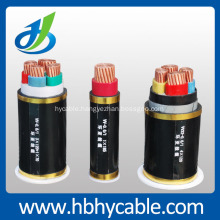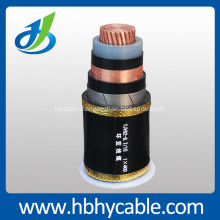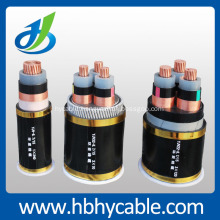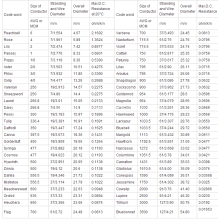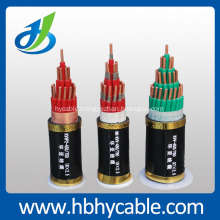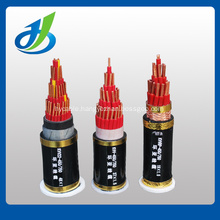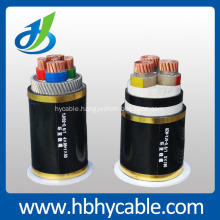The choice of fiber optic cable is not simple. Compared with twisted pair cable and Coaxial Cable, it is not only complicated in structure, but also has a wide variety of materials. In addition to the existing technical parameters, there are many potential factors (materials, production processes, equipment, etc.), slightly Inadvertently, don't say that the service life of the second or third year is difficult to protect, that is, the technical parameters of several years may not be up to standard. Therefore, when we build the network, it is necessary to understand and understand the structure, materials and processes of the optical cable, so as to purchase a suitable type of high-quality optical cable.
1, select the cable according to the number of cores
According to the number of cores, the structure of different types of optical cables can be divided into central bundle tube type, layer stranding type, skeleton type and strip type, etc. The structure of different uses is different, and the user can make corresponding requirements according to the line condition. Generally, the center bundle tube type is adopted below 12 cores, and the center bundle tube type process is simple and low in cost, and is competitive in overhead line laying or branch line network with good pipeline protection; the layer stranded optical cable adopts center placed steel strand or single The wire is reinforced, and the SZ continuous synthetic cable is used, and the number of cables can be up to 144 cores. Its biggest advantage is waterproof, strong pull resistance, and strong side pressure. Can be used for direct burial. At the same time, it is easy to fork, that is, when the optical fiber of the optical cable needs to be separately used, it is not necessary to break the entire optical cable, and only the optical fiber to be bifurcated can be disconnected, which is for the data communication network. It is advantageous to add optical nodes along the cable television network; the number of cores of the ribbon cable can be thousands of cores, which are arranged in a row of 4 to 12 core fibers to form a ribbon fiber unit, and then the plurality of ribbon units are fixed. The way of arranging the cables is as follows. Our network-level optical cables are generally available in bundle tube type and layer-continuous type.
2, select the cable according to the purpose
According to the application, the corresponding optical cable can be divided into overhead optical cable, direct buried optical cable, pipeline optical cable, submarine optical cable and metal-free optical cable. The overhead cable requires high strength and small temperature difference coefficient; the direct buried cable requires anti-buried, anti-pressure, moisture-proof, anti-humidity characteristics and chemical resistance; the pipeline cable and the submarine cable must have good resistance to water pressure, tension and water resistance; The metal cable can be erected together with the high voltage wire. The insulation is better. Although there is no iron core, it must have a certain tensile strength. Therefore, when purchasing optical cables, users should choose according to the use of optical cables, and make requirements for manufacturers to ensure stable and reliable use of optical cables.
3, select fiber optic cable according to materials
The materials used in the cable and the selection of the production process cable materials are the key to the service life of the cable. The manufacturing process is an important link affecting the quality of the optical cable. The products with stable process and excellent quality are basically not included in the optical fiber additional loss during the whole process of optical cable production. ≤0.01dB/km is the basic data to measure the manufacturing level of the optical cable manufacturer. The main materials used in fiber optic cable are: core, fiber ointment, sheath material, PBT (polybutylene terephthalate), which have different quality requirements, and the core requires a large capacity to charge. Higher signal-to-noise ratio, lower bit error rate, longer amplifier spacing, higher information carrying capacity; fiber ointment refers to the grease filled in the bundle tube, the role of which is to prevent moisture in the air. Erosion of the fiber, the second is to cushion the fiber, the buffer fiber is affected by vibration or impact. Ointments have strict quality requirements, emphasizing ultra-low hydrogen evolution, ensuring good low-temperature characteristics of the cable, and preventing "hydrogen damage" from causing serious damage to the cable. The sheath material plays an important role in the long-term reliability of the cable, and is the key to determining the tensile, flattening, bending characteristics, temperature characteristics, natural aging resistance (temperature, irradiation, chemical corrosion) characteristics of the cable, and the fatigue characteristics of the cable. Therefore, high-density polyethylene material (PE) should be used, which has high hardness, good tensile and compressive resistance, and is not easy to damage the outer skin. PBT is a thermoplastic engineering plastic for making secondary cable (beam tube) of optical cable, and must have Yang modulus. High (1600/mm2), low linear modulus (1.5×10-4), good chemical corrosion resistance, good processing characteristics and low friction coefficient. The fiber sleeving is made of PBT material, so that the fiber bundle tube unit has good side pressure and temperature resistance. In places where the hydrolysis resistance requirements are relatively high, in order to ensure the long life of the cable, it is necessary to use a hydrolysis-resistant PBT material.
The purchase of optical cable is much more complicated than coaxial cable. It can't be compared simply by the price of several cores. It should be considered according to the structural form of optical cable, raw materials, production technology and technical indicators. Do not choose too cheap. The products should also be done in the following aspects when purchasing:
(1) The manufacturer must pass the ISO9002 quality system certification, and the Radio, Film and Television Administration has a valid certificate for network access.
(2) Assessment and evaluation of the manufacturer's credit, the performance in recent years and the quality and after-sales service guarantee system.
(3) After selecting the manufacturer, send personnel to check the raw materials, production process and product testing during the production period. After the goods arrive, they should be tested and tested according to the manufacturer's technical indicators, so as not to cause trouble.
Selection of optical cable: In addition to the number of optical fibers and the type of optical fiber, the optical cable is selected according to the environment in which the optical cable is used.
1. When the outdoor cable is directly buried, the armored cable should be used. For overhead, a fiber optic cable with a black plastic outer jacket with two or more ribs is available.
2. Cables used in buildings should be characterized by their flame retardant, toxic and smoke characteristics. Flame-retardant but smoke-free types (Plenum) are generally available in pipelines or in forced air, and flame retardant, non-toxic and smoke-free types (Riser) should be used in exposed environments.
3. When the cable is laid vertically in the building, a layered cable can be used; when horizontal wiring, a branchable cable can be used.
4. If the transmission distance is within 2km, multimode fiber optic cable can be selected, and more than 2km can be used for relay or single mode fiber optic cable.
